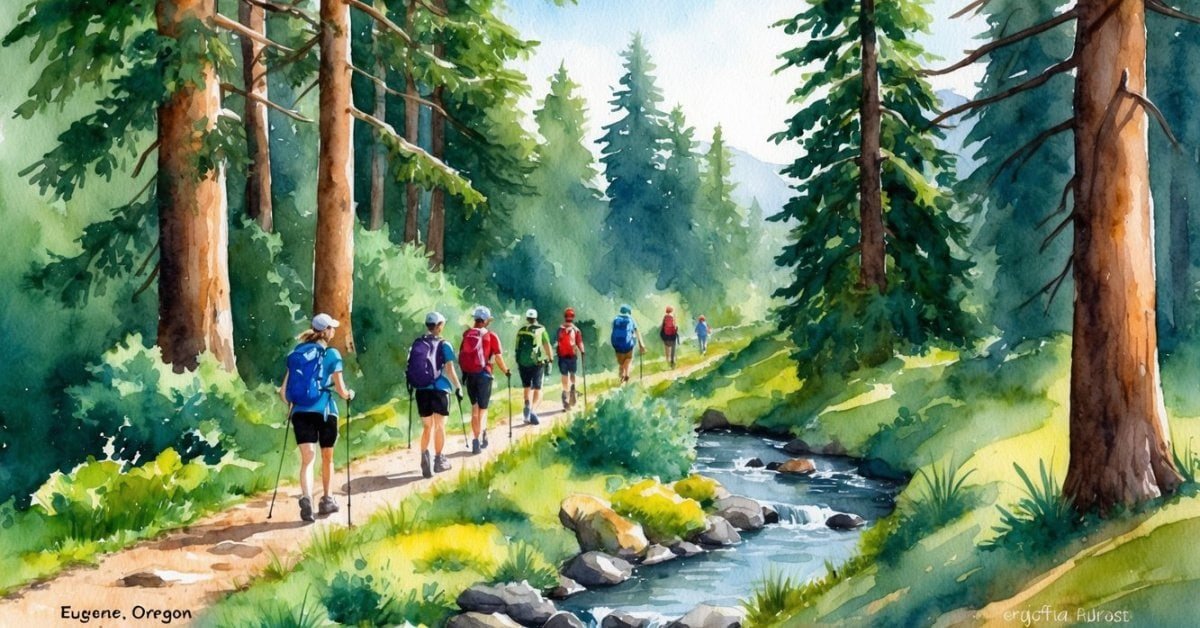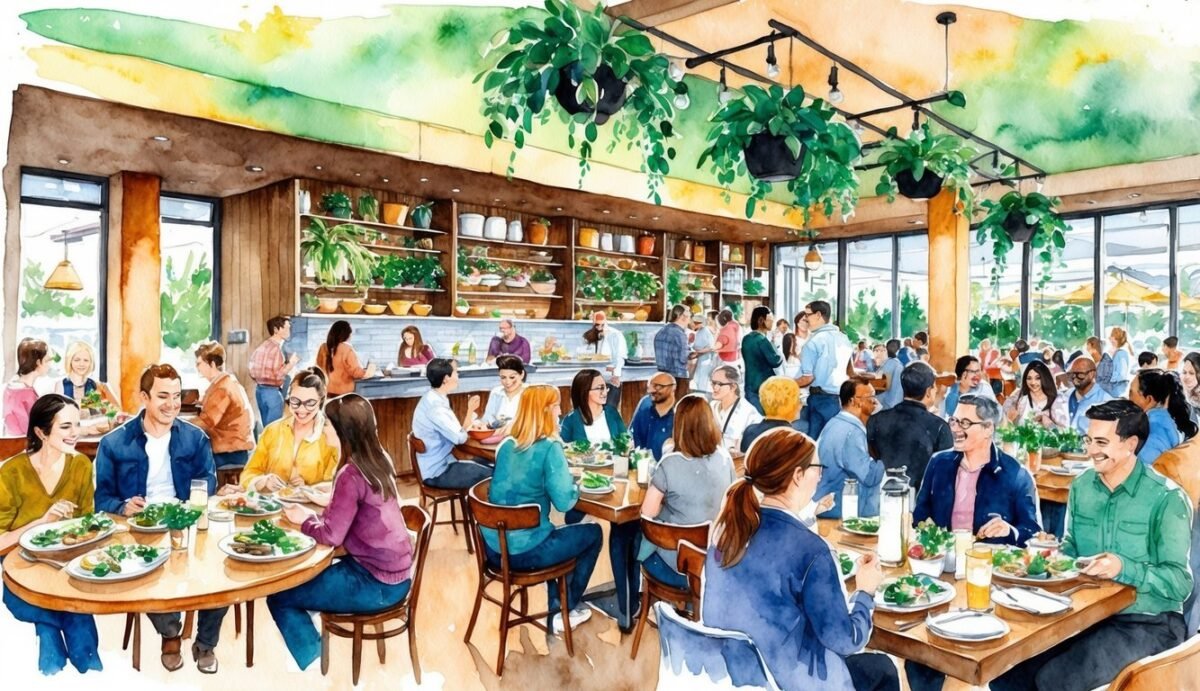Most people know Eugene, Oregon, for its beautiful parks and active arts scene. The story of how the city got its name is just as interesting.
Eugene, Oregon, was named after its founder, Eugene Franklin Skinner, who settled in the area with his wife Mary in the 1840s. His contributions to the early community, including donating land for the town, helped shape the city’s future.

Eugene and Mary Skinner made their home at the base of what is now Skinner Butte, a landmark that still bears the family name. The town was originally called “Eugene City” before being shortened to Eugene in 1889.
To this day, the name stands as a reminder of the city’s roots and the people who helped it grow. Learn more about Eugene Skinner and the history of Eugene, Oregon, by checking out this background on Eugene’s founding.
The Origins of Eugene’s Name

Eugene, Oregon takes its name from a key pioneer and developed in connection with the region’s early settlement. Its name reflects local heritage, local figures, and changes in community identity over time.
Eugene Franklin Skinner
Eugene Franklin Skinner was a prominent early settler and the founder of what would become Eugene, Oregon. He traveled west from Illinois in the early 1840s and eventually settled along the Willamette River.
Skinner established a small trading post, which quickly grew important to local settlers and travelers. He built his cabin on what is now called Skinner Butte, giving him a view of the river and the surrounding area.
His store and land became the center of new settlement and life in the area. As a result, the growing community was soon called “Skinner’s Mudhole” by some due to local flooding, but Skinner’s influence was positive and long-lasting.
The city was later officially named in his honor, showing how much the community valued his leadership and efforts. You can read more about Eugene Franklin Skinner and his role in the region’s early days.
Settlement and Naming
The area that would become Eugene was first recognized as a possible site for a town when Skinner and Judge David Matteson Risdon laid out plans for a settlement in 1851. The town was originally called “Eugene City” to clearly connect the name with its founder.
Early residents focused on farming, setting up homes and trading goods near the trading post. Over time, more settlers arrived and the name Eugene City became well known across the region.
In 1889, “City” was officially dropped, and the town became just “Eugene.” The name change marked a new chapter for the community as it continued to grow and develop.
For more background about the town’s naming, visit the Oregon Encyclopedia.
Historical Context
In the 1800s, Lane County was filling with new pioneers seeking opportunities or land. Eugene City’s creation fit into a wider wave of settlement in Oregon.
Before settlers arrived, the land was home to native Kalapuya people. The establishment of Eugene’s trading post and official plots reflected both the ambitions and changes faced by the area.
Frequent flooding in the winter rainy season made survival hard for residents, leading to the nickname “Skinner’s Mudhole.” Despite these struggles, settlers saw a long-term future in Eugene.
Town development through the 1890s centered around trade, agriculture, and connection to the broader state. Lane County kept growing, and Eugene became its largest city and its county seat.
For more information about Lane County’s history and development, you can visit the Oregon Secretary of State’s website.
Geographic and Cultural Influences

Eugene, Oregon’s location shaped its early growth and local traditions. Geography, weather, and nearby features all played important roles in the city’s identity.
Willamette River’s Impact
The Willamette River flows right through Eugene and is one of the city’s most important natural features. Its wide channel made early travel and trade possible, helping Eugene grow from a small settlement into a busy town in the Willamette Valley.
People used the river for fishing, transportation, and water for crops. It provided a lifeline for settlers, including the Native Kalapuyans, who lived in the area for thousands of years.
The land around the river was good for farming because flooding during the rainy season brought rich soil. The river also attracted new businesses, like mills and lumber companies, because they needed water power.
Boat travel linked Eugene to other parts of the Pacific Northwest, making it easier for people and goods to move in and out of the area.
Role of the Cascade Mountains
The Cascade Mountains are just east of Eugene and form a natural barrier along the edge of the Willamette Valley. These mountains have always affected the city’s climate by blocking dry air and sending lots of rainfall to the valley below.
Heavy rainfall creates green forests and supports farms around Eugene. The mountains are popular for outdoor activities like hiking, skiing, and camping, helping to shape the local lifestyle and economy.
The Cascade range also influenced how people traveled. Early settlers often had to cross these high peaks to reach the fertile lands of western Oregon.
The mountains are still an important part of life in this part of the Pacific Northwest.
Proximity to the Pacific Ocean
Eugene is about 60 miles from the Pacific Ocean, which affects the city’s weather. Ocean air brings mild temperatures and lots of rainfall, especially during the fall, winter, and spring.
Many local traditions—like fishing—developed because of the nearby coast. It’s easy for people in Eugene to visit the ocean for fun or work, and coastal products like seafood have influenced what people eat.
The ocean’s weather patterns help keep Eugene cooler in the summer and warmer in the winter compared to dry inland places. Being close to the coast makes Eugene feel connected to the broader Pacific Northwest and its environment.
Growth and Development of Eugene

Eugene became a well-known city in Oregon through changes in its name, population, and area. The city was shaped by its early settlers and its place in the Willamette Valley.
Becoming the City of Eugene
Originally called Eugene City, the town was named after the pioneer Eugene Skinner, who was among the first settlers in the area. He built a cabin on what is now known as Skinner Butte, using the spot to avoid floods from the Willamette River.
The settlement grew as more families arrived. Businesses and services started popping up, supporting new residents.
In 1864, the town’s official name switched from Eugene City to City of Eugene, and later it was shortened just to Eugene. By the late 1800s, more schools and churches were built, and a local government formed to organize city life.
This made Eugene a more structured and lively place to live.
Expansion in the Willamette Valley
Located in the center of the Willamette Valley, Eugene soon became a main hub in the region. The city’s growth was helped by its access to the river as well as farming and trade opportunities.
People from nearby areas moved in for jobs, especially after the arrival of the railroad. Being part of Lane County, Eugene played a role in connecting small communities across the valley.
The rise of the University of Oregon helped shape the city as well, drawing students and teachers from across Oregon and beyond. Eugene’s expansion came with the building of better roads, more homes, and new businesses.
Its place in the Willamette Valley allowed it to grow into a key city for jobs, education, and the arts.
Modern Identity and Notable Landmarks

Today, Eugene is known for its lively university atmosphere, easy access to outdoor adventures, and its ties to larger cities like Portland. Landmarks and major features shape the character and daily life within the city.
University of Oregon and Education
The University of Oregon is one of the most important landmarks in Eugene. It brings students and staff from all over the world, adding energy and diversity to the city.
The large, tree-filled campus includes the famous Hayward Field, a center for track and field events. Eugene is often called “Track Town, USA” because of its strong connection to running and sports.
Local businesses and neighborhoods are shaped by the university, especially during the school year. Art galleries, libraries, and campus museums are open to both students and the public.
Educational events and college sports create a strong sense of community. Many teachers, students, and researchers live in Eugene, giving it a youthful and creative feel.
University-related activities help drive the local economy and support a wide range of restaurants, coffee shops, and bookstores.
Outdoor Recreation and Hiking
Eugene is surrounded by forests, rivers, and hills, making it a popular spot for people who love the outdoors. Residents can hike Spencer Butte for a clear view of the city, paddle the Willamette River, or bike along many city trails.
Many parks, such as Hendricks Park with its rhododendron garden, offer calm escapes. Recreation is built into daily life, from after-school sports to weekend camping trips.
Locals and visitors enjoy the mild climate and green spaces year-round. The city’s official motto, “A Great City for the Arts and Outdoors,” is seen in its support for trails, community gardens, and sports.
Annual events highlight Eugene’s outdoor strengths, including running races and outdoor festivals. Fresh air and easy-to-reach nature spots are a big reason why many people choose to live here.
Connections to Portland
Eugene is about 110 miles south of Portland, Oregon’s largest city. It’s easy to travel between the two by car or train.
Many residents visit Portland for concerts, flights, shopping, or special events. While smaller, Eugene shares some culture with Portland, such as a love for local music, food carts, and craft beer.
Families and businesses sometimes move between the two cities because of work or school. Some people who work in Portland have chosen to live in Eugene for its slower pace and lower cost of living.





